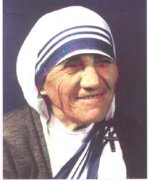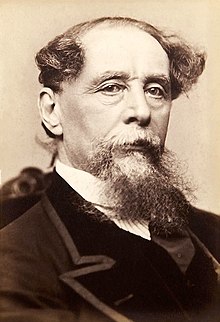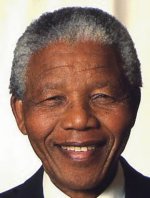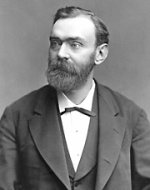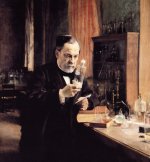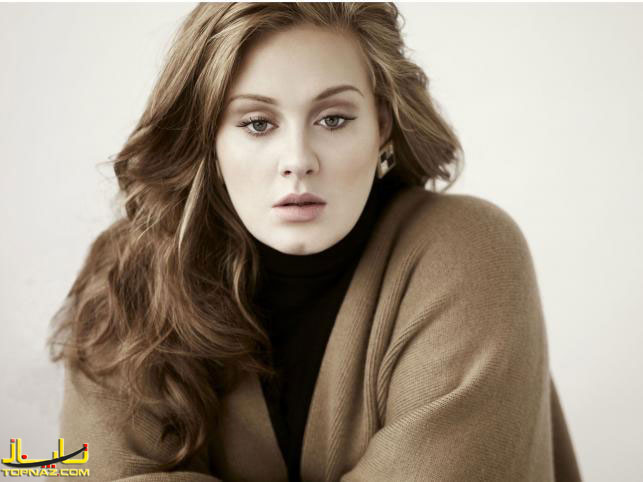Biography of charles Dickens
Charles Dickens was born on February 7, 1812, the son of John and Elizabeth Dickens. John Dickens was a clerk in the Naval Pay Office. He had a poor head for finances, and in 1824 found himself imprisoned for debt. His wife and children, with the exception of Charles, who was put to work at Warren's Blacking Factory, joined him in the Marshalsea Prison. When the family finances were put at least partly to rights and his father was released, the twelve-year-old Dickens, already scarred psychologically by the experience, was further wounded by his mother's insistence that he continue to work at the factory. His father, however, rescued him from that fate, and between 1824 and 1827 Dickens was a day pupil at a school in London. At fifteen, he found employment as an office boy at an attorney's, while he studied shorthand at night. His brief stint at the Blacking Factory haunted him all of his life — he spoke of it only to his wife and to his closest friend, John Forster — but the dark secret became a source both of creative energy and of the preoccupation with the themes of alienation and betrayal which would emerge, most notably, in David Copperfield and in Great Expectations.
In 1829 he became a free-lance reporter at Doctor's Commons Courts, and in 1830 he met and fell in love with Maria Beadnell, the daughter of a banker. By 1832 he had become a very successful shorthand reporter of Parliamentary debates in the House of Commons, and began work as a reporter for a newspaper.
Scholars Programme
In 1833 his relationship with Maria Beadnell ended, probably because her parents did not think him a good match (a not very flattering version of her would appear years later in Little Dorrit). In the same year his first published story appeared, and was followed, very shortly thereafter, by a number of other stories and sketches. In 1834, still a newspaper reporter, he adopted the soon to be famous pseudonym "Boz." His impecunious father (who was the original of Mr. Micawber in David Copperfield, as Dickens's mother was the original for the querulous Mrs. Nickleby) was once again arrested for debt, and Charles, much to his chagrin, was forced to come to his aid. Later in his life both of his parents (and his brothers) were frequently after him for money. In 1835 he met and became engaged to Catherine Hogarth.
The first series of Sketches by Boz was published in 1836, and that same year Dickens was hired to write short texts to accompany a series of humorous sporting illustrations by Robert Seymour, a popular artist. Seymour committed suicide after the second number, however, and under these peculiar circumstances Dickens altered the initial conception of The Pickwick Papers , which became a novel (illustrated by Hablot K. Browne, "Phiz," whose association with Dickens would continue for many years). The Pickwick Papers continued in monthly parts through November 1837, and, to everyone's surprise, it became an enormous popular success. Dickens proceeded to marry Catherine Hogarth on April 2, 1836, and during the same year he became editor of Bentley's Miscellany, published (in December) the second series of Sketches by Boz, and met John Forster, who would become his closest friend and confidant as well as his first biographer.
After the success of Pickwick, Dickens embarked on a full-time career as a novelist, producing work of increasing complexity at an incredible rate, although he continued, as well, his journalistic and editorial activities. Oliver Twist was begun in 1837, and continued in monthly parts until April 1839. It was in 1837, too, that Catherine's younger sister Mary, whom Dickens idolized, died. She too would appear, in various guises, in Dickens's later fiction. A son, Charles, the first of ten children, was born in the same year.
Nicholas Nickleby got underway in 1838, and continued through October 1839, in which year Dickens resigned as editor of Bentley's Miscellany. The first number of Master Humphrey's Clock appeared in 1840, and The Old Curiosity Shop, begun in Master Humphrey, continued through February 1841, when Dickens commenced Barnaby Rudge, which continued through November of that year. In 1842 he embarked on a visit to Canada and the United States in which he advocated international copyright (unscrupulous American publishers, in particular, were pirating his works) and the abolition of slavery. His American Notes, which created a furor in America (he commented unfavorably, for one thing, on the apparently universal — and, so far as Dickens was concerned, highly distasteful — American predilection for chewing tobacco and spitting the juice), appeared in October of that year. Martin Chuzzlewit, part of which was set in a not very flatteringly portrayed America, was begun in 1843, and ran through July 1844. A Christmas Carol, the first of Dickens's enormously successful Christmas books — each, though they grew progressively darker, intended as "a whimsical sort of masque intended to awaken loving and forbearing thoughts" — appeared in December 1844.
In that same year, Dickens and his family toured Italy, and were much abroad, in Italy, Switzerland, and France, until 1847. Dickens returned to London in December 1844, when The Chimes was published, and then went back to Italy, not to return to England until July of 1845. 1845 also brought the debut of Dickens's amateur theatrical company, which would occupy a great deal of his time from then on. The Cricket and the Hearth, a third Christmas book, was published in December, and his Pictures From Italy appeared in 1846 in the "Daily News," a paper which Dickens founded and of which, for a short time, he was the editor.
In 1847, in Switzerland, Dickens began Dombey and Son, which ran until April 1848. The Battle of Life appeared in December of that year. In 1848 Dickens also wrote an autobiographical fragment, directed and acted in a number of amateur theatricals, and published what would be his last Christmas book, The Haunted Man, in December. 1849 saw the birth of David Copperfield, which would run through November 1850. In that year, too, Dickens founded and installed himself as editor of the weekly Household Words, which would be succeeded, in 1859, by All the Year Round, which he edited until his death. 1851 found him at work on Bleak House, which appeared monthly from 1852 until September 1853.
In 1853 he toured Italy with Augustus Egg and Wilkie Collins, and gave, upon his return to England, the first of many public readings from his own works. Hard Times began to appear weekly in Household Words in 1854, and continued until August. Dickens's family spent the summer and the fall in Boulogne. In 1855 they arrived in Paris in October, and Dickens began Little Dorrit, which continued in monthly parts until June 1857. In 1856 Dickens and Wilkie Collins collaborated on a play, The Frozen Deep, and Dickens purchased Gad's Hill, an estate he had admired since childhood.
The Dickens family spent the summer of 1857 at a renovated Gad's Hill. Hans Christian Anderson, whose fairy tales Dickens admired greatly, visited them there and quickly wore out his welcome. Dickens's theatrical company performed The Frozen Deep for the Queen, and when a young actress named Ellen Ternan joined the cast in August, Dickens fell in love with her. In 1858, in London, Dickens undertook his first public readings for pay, and quarreled with his old friend and rival, the great novelist Thackeray. More importantly, it was in that year that, after a long period of difficulties, he separated from his wife. They had been for many years "tempermentally unsuited" to each other. Dickens, charming and brilliant though he was, was also fundamentally insecure emotionally, and must have been extraordinarily difficult to live with.
In 1859 his London readings continued, and he began a new weekly, All the Year Round. The first installment of A Tale of Two Cities appeared in the opening number, and the novel continued through November. By 1860, the Dickens family had taken up residence at Gad's Hill. Dickens, during a period of retrospection, burned many personal letters, and re-read his own David Copperfield, the most autobiographical of his novels, before beginning Great Expectations, which appeared weekly until August 1861.
1861 found Dickens embarking upon another series of public readings in London, readings which would continue through the next year. In 1863, he did public readings both in Paris and London, and reconciled with Thackeray just before the latter's death. Our Mutual Friend was begun in 1864, and appeared monthly until November 1865. Dickens was in poor health, due largely to consistent overwork.
In 1865, an incident occurred which disturbed Dickens greatly, both psychologically and physically: Dickens and Ellen Ternan, returning from a Paris holiday, were badly shaken up in a railway accident in which a number of people were injured.
1866 brought another series of public readings, this time in various locations in England and Scotland, and still more public readings, in England and Ireland, were undertaken in 1867. Dickens was now really unwell but carried on, compulsively, against his doctor's advice. Late in the year he embarked on an American reading tour, which continued into 1868. Dickens's health was worsening, but he took over still another physically and mentally exhausting task, editorial duties at All the Year Round.
During 1869, his readings continued, in England, Scotland, and Ireland, until at last he collapsed, showing symptoms of mild stroke. Further provincial readings were cancelled, but he began upon The Mystery of Edwin Drood.
Dickens's final public readings took place in London in 1870. He suffered another stroke on June 8 at Gad's Hill, after a full day's work on Edwin Drood, and died the next day. He was buried at Westminster Abbey on June 14, and the last episode of the unfinished Mystery of Edwin Drood appeared in September.


